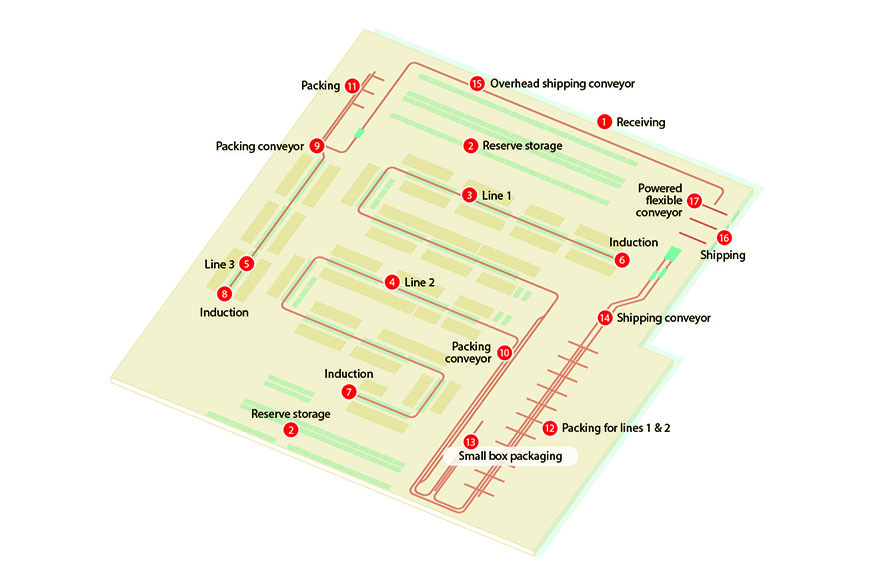Order fulfillment at Educational Development Corp.
EDC brought in a WMS, lights, powered conveyor and sortation to write a new chapter in the book distributor’s distribution story.
Educational Development Corp.
Tulsa, Okla.
Size of Facility
150,000 square feet
Products Handled in the Facility
Children’s books
Throughput
6,000 to 7,000 orders per day
SKUs
2,000
Shifts Per Day/ Days Per Week:
1 shift per day, 5 days per week
Receiving
Much of the product received (1) at the facility is floor loaded, so the first step in the receiving process is to create a license plate bar code label for a new pallet. Cartons are then unloaded and scanned to a pallet. Once the pallet is built, it’s ready for storage. Warehouse personnel, rather than the warehouse management system (WMS), determine the putaway location in the reserve storage area (2) based on an empty location report.
Replenishment
Replenishment of the pick modules (3,4,5) is directed by the WMS based on minimum/maximum levels at pick locations. Pallets are delivered to a staging location, where stockers then complete the replenishment process.

Picking
Orders drop into the WMS system, which features a line-load allocation process so that work is spread across the three pick lines. Lines 1 and 2 (3, 4) are mirror images of each another. Line 3 (5) is typically used to segregate orders that can be filled from EDC’s fastest-moving items. The WMS first looks at every order and queries as to whether there is inventory on one of the pick lines to fill the order and then balances the work on the two pick lines. In addition, supervisors examine orders that aren’t allocated by the WMS.
At the induction station of each pick line (6,7,8), an associate scans the bar code on the order and on a tote, marrying an order to a tote. Once on the conveyor, the tote travels to the first camera that “reads” the bar code on the tote and queries the pick-to-light system to determine if any picks are in either of the two zones the tote just passed. If so, the tote is diverted to the appropriate side of the first section of pick line; once all the items from that side of the pick line have been selected, the tote gets pushed back onto the powered center conveyor and once again travels to first camera to determine if it needs to be diverted to the other side. If not, it travels to the next camera and the process repeats until it has made its way through the entire pick line. The average order size is seven line items and the pick line has 14 pick zones so the average order could bypass half of the pick line.
Packing
Once an order is picked complete, it is inducted onto the packing conveyor serving that line (9 is conveyor for Line 3 and 10 is conveyors for Lines 1 & 2) and conveyed to a pack station. There are three packing areas in the facility. One area (11) is reserved for Line 3 orders; another area (12) is packing for Lines 1 & 2. In addition, a special area (13) is set aside for orders that can be shipped in smaller packaging. At each area, packers have a small laptop, scanners and a small label printer. Every book is scanned, and if the system confirms that the order has been picked complete, it automatically prints the packing list and the UPS shipping label. From there, it goes to an overhead void fill, the carton is automatically sealed, and travels on the shipping conveyor (14 serves Lines 1 & 2 and 15 services Line 3) to shipping (16). The Line 3 shipping conveyor is overhead and packages travel down a chute to shipping. Powered flexible conveyors (17) deliver the shipping containers into the trucks.
System suppliers
Consulting: UPS
System Integrator, Conveyor and Sortation: Cisco-Eagle
Converyor & Sortation: Hytrol
Rack: Steel King
Flow Rack: Mallard
WMS: Deposco
Pick-to-Light and WCS: Lightning Pick
Bar Code Scanning: Honeywell













